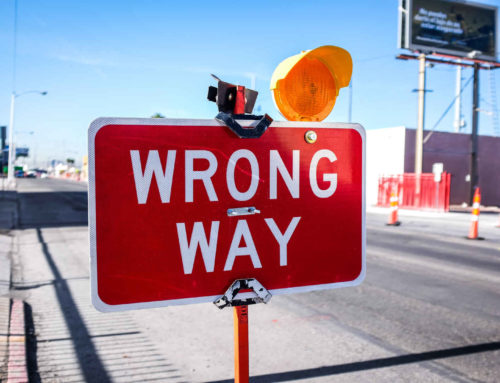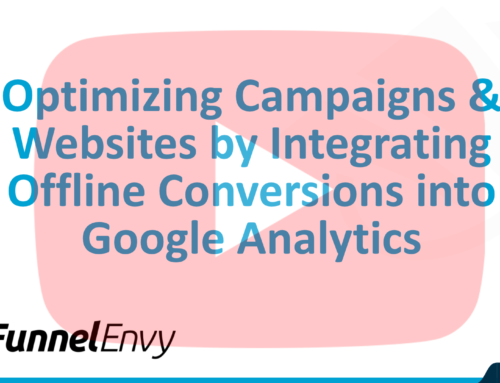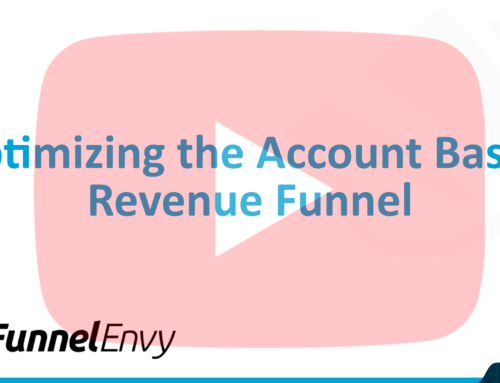There’s a pervasive myth in the conversion optimization world: that it’s only about increasing the percentage of visitors that convert to customers. It’s true that we spend a lot of time looking at that rate and finding ways to improve it. By removing roadblocks and friction to conversions on your website, you’ll ultimately see your customer base, revenue, and profits grow.
But a good conversion optimization strategy is fundamentally about improving your bottom line, and that can also be done by improving other metrics; including the your average order value and lifetime customer value. Acquiring new traffic is expensive and labor intensive. Making the most of customers that are already on your site and willing to buy is good business sense. Here’s how to get started.
Image source: Flickr
What You Need to Know About Average Order Value
Average Order Value (AOV), sometimes also called Average Sale Value (ASV), is an important metric for every business owner to understand. The metric is simple: each time you make a sale, on average you will get that person to spend X dollars. X is important because it helps you predict everything from ROI on your marketing efforts to overall profit margins for your business. But your average order value isn’t fixed. Studies have shown that there are a number of different factors can influence what customers are likely to spend with you in a single purchase.
Before diving into some of the more common areas to test, I want to highlight two important things to keep in mind when you’re experimenting with average order value CRO:
- The best approaches to CRO are systematic, and they tackle one issue at a time. By really focusing, you can blast through obstacles and see real progress, versus a scattershot approach. Average order value is a more advanced technique, or a secondary step to basic conversion optimization. Consider focusing on your overall conversion rate first, and then shift the focus on to your average order order. Ensure that your traffic numbers are high enough to capture the value of AOV related testing.
- A huge range of factors can influence your AOV, from free shipping offers to program bundles. Remember to form hypotheses and test each factor, so that you can understand its impact. Don’t debut new packages, free shipping, and big discounts simultaneously – or you won’t be able to pinpoint cause and effect.
There are at least a dozen different permutations that you can test when you’re working to increase your AOV, but the following three are among the most effective to accelerate your revenue through this approach.
AOV Accelerator One: Shipping Offers That Raise Your AOV
40% of customers are willing to spend more on purchases if they get free shipping, and 71% of customers took advantage of free shipping offers over the holiday season. In a sense, this uses Cialdini’s concept of reciprocity – if you give me something, I’ll give you something in return. Stated more plainly, many shoppers simply can’t pass up a deal. But one mistake that site owners make is simply offering free shipping. If free shipping gets people to convert, they reason, then it’s worth the potential cut in profits.
But what if I told you that you could offer free shipping in a way that raises your AOV?
The biggest and most successful retailers have tuned into this technique. How frequently have you seen offers such as “free shipping when you spend over $100” or “buy three pairs of jeans, and get free shipping?” These numbers are not random: instead, they’re based on two factors.
- The merchant’s current AOV;
- Hypotheses on what number they can raise that AOV to and still get customers to buy.
So let’s say, for example, that your current AOV is $60. If your goal is to raise your AOV, you might begin to offer free shipping on offers on $100. If that’s not converting, you might experiment with different price points and find that your sweet spot is $75. As long as the profit margin remains reasonable in the face of increased costs from shipping, you will know you’re on the right track with a free shipping offer.
AOV Accelerator Two: Product Bundles
Package deals and product bundles are a great way to increase average order value. Consider, for example, if you operate a fashion retail site. You might have a customer that’s visiting your site, looking for a sweater. That’s a straightforward sale to make. But many merchants have found that product bundles are a natural way to leverage an existing purchase intent into a larger spend.
For example, you might offer a customer a bundled sweater, scarf, and earrings at an overall 20% discount. By buying the items together, they achieve an overall savings. In many cases, the purchase would have never happened if you didn’t suggest it. But once a customer sees the items together, it feels like a “natural” fit.
Amazon is a master of this. Nearly every product or book on Amazon is offered alone and as part of a bundle. “Buy this book on marketing, or buy it as part of this trio of books that are commonly bought together.” The prospective customer gets quality recommendations on an area that they care about, and Amazon sells additional books.
The key to successful product bundles is to suggest pairings that will appeal to your customers. Depending on the depth of customer information you have, it may be easy to suggest. If you have any ambiguity, many retailers have had success with mix and match deals to customers. You set the minimum criteria – for example, buy any three items and save 10% – and then allow the customer to choose the specifics. This allows you to capture the benefit of product bundling, while having the added advantage of flexibility of appealing to a wider range of customers. Sometimes curated packages are the way to go, and sometimes customers want more options. The only way to really know is the experiment and test.
AOV Acclerator Three: Upselling and Cross-selling
Another area that we’ve already discussed extensively on the FunnelEnvy blog is upselling and cross-selling. As an advanced technique, each of these allows you to offer related products or higher end products to enthusiastic customers. One case study highlight by KISSMetrics suggests that upselling may be 20x more effective for eCommerce that cross-selling. Ultimately, it’s up to you to test based on your product mix, business goals, and customer preferences. A few areas that I recommend considering in relation to upselling and cross-selling:
- If you haven’t implemented these techniques and have multiple products in your product mix, it’s time to develop this strategy. Take the time to make connections between your customer’s buyer journey and the overall customer experience that your products create. The more strategic your overall funnel design, the more effective these techniques will be for raising your AOV.
- Targeting is critical. In order to successfully upsell and cross-sell, you need to have a strong understanding of who your customers are and what they want. A key aspect of this is knowing the degree to which one kind of purchase signals a potential interest in another product. The stronger your understanding of the predictive analytics side of your business, the better.
- Don’t minimize the power of the small cross-sell. For example, many merchants make a healthy profit on charging just a few dollars to gift wrap products before they ship. While the overall increase to AOV is minimal, in the range of a couple of dollars per product, the profit margins can be excellent. Other retailers find that add-on items, costing a small amount each, are a great way to boost sales. For example, if you sell fan products related to a specific movie or TV series, you might offer related theme fan buttons that retail for $1.99 each. These purchases feel minimal to someone already spending $25, $50, or $100 but can help raise your AOV across the board.
Conclusion
If you’re searching for new ways to grow your business and have already achieved competitive industry conversion rates, it’s time to look at your average sale value. AOV growth indicates a company that’s developing better strategies for selling to its customers and becoming more effective at connecting. Three areas to consider include shipping offers, product bundling, and upselling/cross-selling opportunities. Have you had experience with raising your AOV in your business? Let me know what’s worked for you in the comments below.





